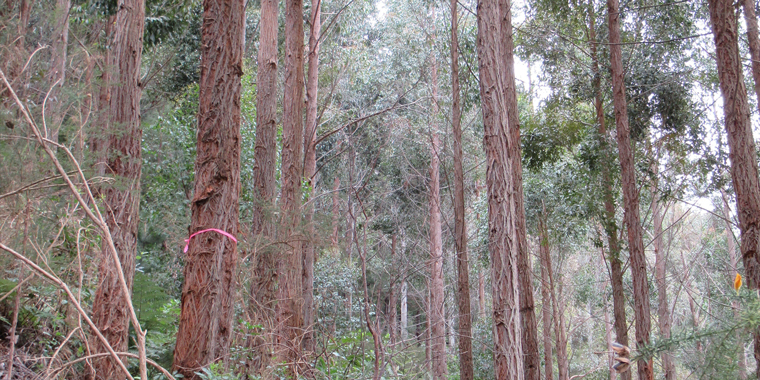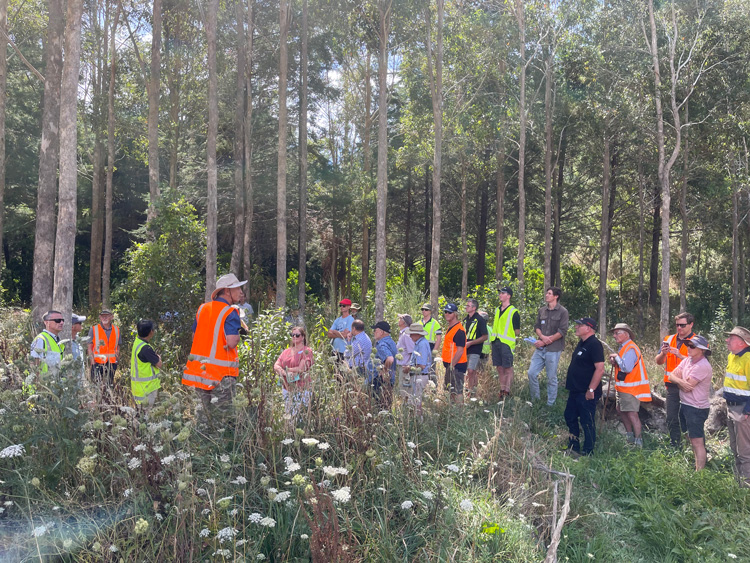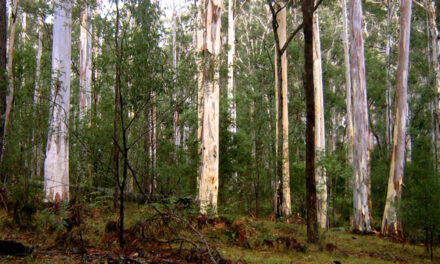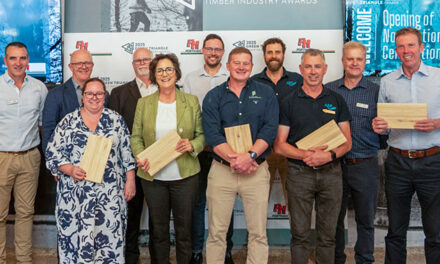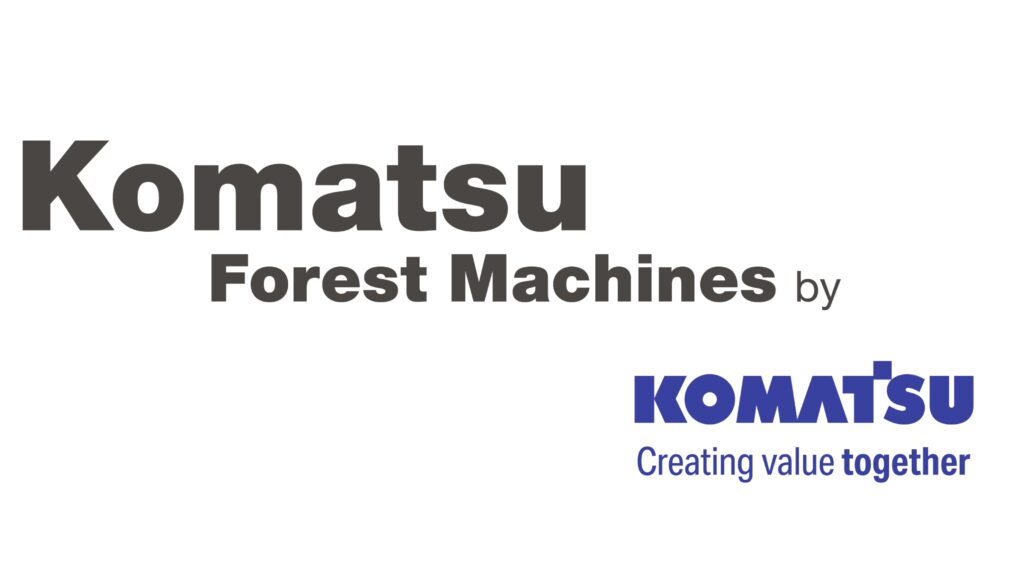NZ EUCALYPTS: A PROMISING REGIONAL CASE STUDY
Paul Millen talking to a field day group about the 19-year-old stand of
unimproved E. bosistoana in Marlborough Regional Forests’ Pukaka Forest – one of the sites included in the case study. Image: supplied NZDFI
New Zealand Dryland Forests Innovation (NZDFI) recently released a two-part case study on planting durable eucalypts in the Marlborough region – one of 12 possible catchments nationwide that could diversify the forest industry and generate new investment and employment.
Paul Millen, NZDFI’s project manager, explains the projected benefits of a small-scale regional hardwood industry in Marlborough – including the production of naturally durable posts to replace CCA-treated posts in the region’s vineyards; other solid wood and engineered wood products; and biomass for bioenergy.
As host of a recent webinar on the subject, Mr Millen noted that to build a new hardwood industry from the tree roots up “requires long-term and intergenerational collaboration and investment. We’ve actually spent 15 years doing the tree breeding – not quite a generation.”
He added that the aim for the next 20-30 years is to establish and manage the trees – and then harvest and transport them to two regional hubs in Marlborough for processing. “There’s also the potential to work with an existing large processing hub in Nelson [Nelson Pine Industries], which manufactures engineered wood products.”
Mr Millen says wine production contributes over $2 billion to Marlborough’s GDP. Innovative mechanisation has increased productivity, but large machines operating 24/7 can break a significant proportion of the 19 million posts used in the vineyards.
Broken post replacement at 5% p.a. amounts to just under a million posts every year – “a significant waste stream for sustainable wine growers who are aiming to achieve zero waste to landfill by 2050”.
He notes further that naturally durable hardwood posts are less likely to break, and treatment costs would be eliminated. “Also, you don’t end up with hazardous waste because broken posts could be used for firewood and bioenergy.
“From that first idea of a vineyard post, NZDFI’s vision has evolved to wanting to plant 60,000 hectares of eucalypt forests across 12 regional catchments to supply a multi-regional, sustainable and durable hardwood industry worth over $1 billion annually by 2050.
“We want those regions to develop processing sites with good road, rail and, potentially, port connections for log supply – and also for moving hardwood products once they’ve been produced.”
The big goal, says Mr Millen, is to produce a range of products for a variety of markets – from posts, poles and crossarms, to cladding, structural and decking timber.
In particular, he sees Australia as a huge opportunity for New Zealand-grown eucalypts. “Australian native forests supply hardwood timbers with log sales worth A$400 million per year.
“However, they are now locking up their forests and that’s having a huge impact, even as we speak, on the supply chains of their traditional hardwood products.”
Marlborough case study
“When we took NZDFI’s vision and applied it to Marlborough, we began with the idea of some 5,000 hectares of eucalypt forest to supply a hardwood industry worth around $90 million by 2055.
“Essentially, based on our case study we’ve got to get a new supply chain established by planting around 250-300,000 genetically improved durable eucalypt trees annually for the next 30 years.”
According to Mr Millen that’s not a huge task. One local nursery’s pads are already full, with some 200,000 seedlings this year – and there are well-established transport and harvesting operations that can run the supply chain.
“Taking a closer look at the case study, the wood supply catchment that we’ve proposed is based on the following concept: replanting 3,000-3,500 hectares of pine plantation cutover in North Marlborough; and around 1,500 to 2,000 hectares in South Marlborough in a mosaic of forest woodlots and small forests.
“And then there’s the two future processing hubs – a sawmill and remanufacturing hub at Kaituna [north-west of Blenheim], and a post/peeling plant at Riverlands [an industrial site south of Blenheim].”
Mr Millen says there is also an opportunity for mobile and on-farm processing. “People could grow the trees, produce the posts from a post-peeler operation in the forest, and then put those posts straight into the vineyards.”
MAIN PIC: MRF’s 18-year-old E. globoidea stand in Pukaka Valley, with trees marked for biomass sampling. Image: NZDFI

